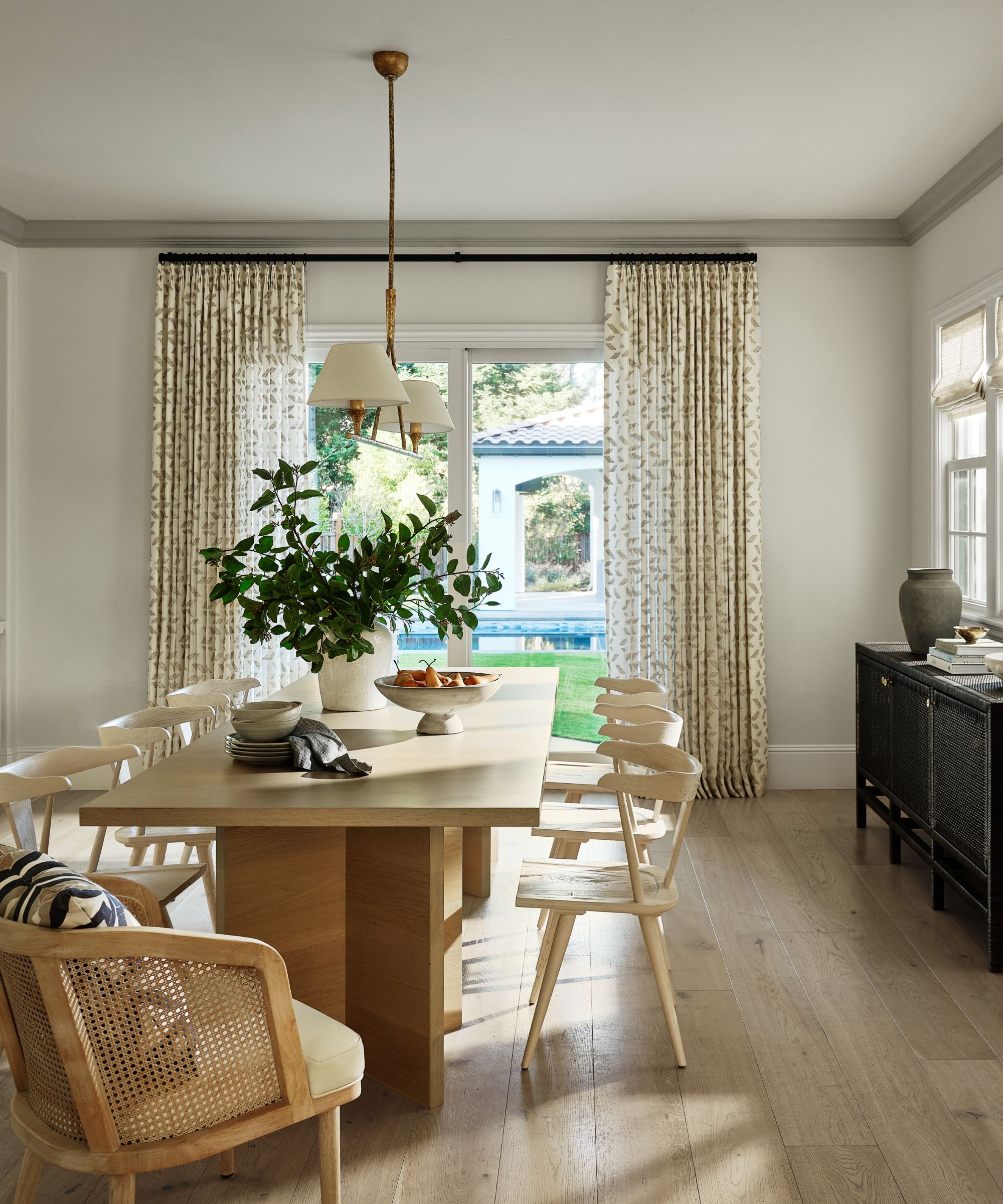
When designing a room, picking out drapes is often left for last. A finishing touch that can easily make or break a room, it's an important decision – but can also feel a bit like a mystery. With a wide range of types and styles on the market, you're not alone if the question of drapery leaves you feeling a little overwhelmed.
Luckily, world-renowned designer Nate Berkus just shared his top tips for picking out drapes and curtains. He also shared the curtain features he made sure to include in his own living room design scheme. Off the heels of his recent collaboration with The Shade Store, he's full of great ideas, and now he's here to share. If you're still a bit stuck on how to choose curtains for your living room, Nate's got all the answers. Here's what the designer had to say.
Nate Berkus' top tips for deciding on drapery
'So, for draperies, there are a million styles that you can do at the top,' Nate says in an Instagram video, standing near tall, dark gray shades hanging in his living room. 'I'm sure you've been super confused trying to figure it out.'
Drapes come pleated, pinched, paneled, and more – and that list completely excludes questions of hardware and length. Because those styles might not sound too different from one another, Nate shows off the top of his curtains to clarify. 'When they say pleat, it means this,' he says, displaying the artfully folded curtain – Tailored Pleat Drapery from The Shade Store. 'This is an inverted pleat at the top of this.'
Knowing which style you prefer isn't always as simple as it sounds, and sometimes it's best to take cues from the experts. Nate, a trustworthy source of design inspiration, says he almost 'universally' goes for either an inverted pleat or 'ripple fold' with rings, hung on a thin rod.
'That is sort of my go-to,' he says. 'I think the rule of thumb is to keep the hardware simple, and the drapes fuller. I don't love drapes that puddle on the ground, even though I've seen it executed beautifully. I like the drapes just to skim the floor, which means they're just maybe a quarter of an inch higher than the floor.'

Another drapery rule Nate always abides by? Placing the curtains 'as high as possible.' He says that when using dark fabric, like the one he's selected for his own space, it's especially important for the fabric to reach all the way up to the ceiling – even when architectural details take center stage.
'You can see here in our living room, we've got a lot of crown molding – there's a lot of detail. But the rod is right underneath, as high as it can go. And the reason that I think that that's important is that when you walk into a space, you want your eye to go up. You don't want your eye to be cut off. So, I'm not a fan of draperies that are mounted right above the window frame – they should all come from the top of the wall, or at least the highest point.'
Picking out drapery for your home doesn't have to be a mystery. With clever advice from the pros, you'll be on your way to a living room that incorporates the perfect level of shade and softness – through summer and beyond.







